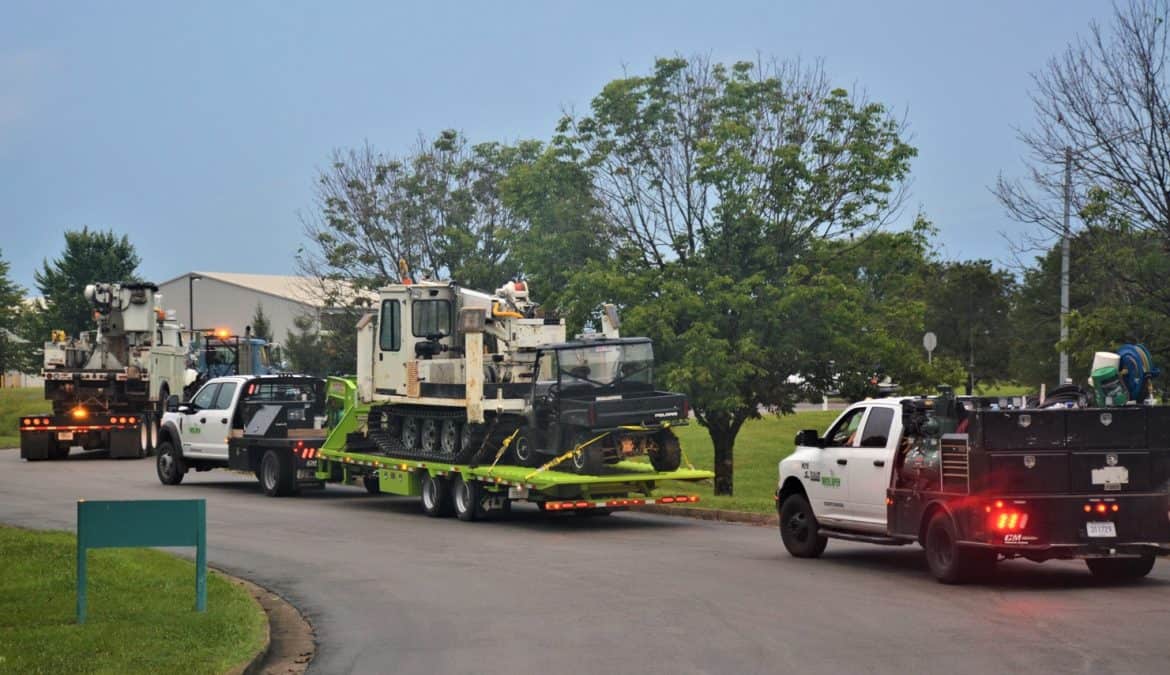Kentucky co-op crews helping restore power in Louisiana are sharing photos of their experience and the devastation left behind by Hurricane Ida 11 days ago.
The photos show homes and businesses destroyed by winds exceeding 100 miles-per-hour, power restoration efforts in swampy marshlands and Louisiana residents thanking the line technicians for their dedication and hard work.
In addition to more than 120 contractors released by Kentucky co-ops, more than 40 Kentucky co-op personnel are assisting DEMCO, an electric cooperative serving the Greater Baton Rouge area. The co-op reports 78 percent meter-restoration, with remaining outages of 23,911.
On social media, the co-op is reminding its members that restoration of the electric grid is a multi-step process after a severe storm such as Hurricane Ida. “Major transmission must be restored in order to distribute large amounts of power through Louisiana, along with replacing hundreds of power poles and thousands of miles of power lines in hard to reach areas. Mutual assistance crews are here helping, but this is a lengthy process,” the co-op reported.
The Kentucky mutual aid response includes co-op crews from Fleming-Mason Energy, Kenergy Corp, Nolin RECC and the co-op’s Wide Open Utility Service subsidiary, Shelby Energy and South Kentucky RECC.

“The damage is extensive and devastating,” says Charlie Lewis, the mutual aid coordinator for Kentucky Electric Cooperatives. “Kentucky co-op crews are working long hours in very challenging conditions. In addition to a tremendous amount of debris and big jobs to replace hundreds of utility poles, the crews face hot and humid conditions with occasional thunderstorms. The people of Louisiana have been so gracious and grateful for the help our crews are providing. We continue to pray for everyone’s safety and for power to be restored as quickly as safety protocols allow.”
DEMCO powers 113,500+ meters that serve about a half million people in seven parishes: Ascension, East Baton Rouge, East Feliciana, Livingston, St. Helena, West Feliciana, and Tangipahoa. The co-op has more than 250 employees.
Coordinated by Kentucky Electric Cooperatives, mutual aid crews from Kentucky co-ops are deployed to specific sister cooperatives who have requested their help. On daily conference calls, safety teams from each state assess optimal deployments.
The top priority of each local Kentucky co-op is service to its own consumer-members. Before committing resources to mutual aid requests, each co-op ensures it has ample crews available for all local needs, including routine maintenance and emergencies.
In addition, Kentucky-based United Utility Supply Cooperative has reached out to cooperative distributors in the region to offer its assistance of material and supplies.
Because the national network of transmission and distribution infrastructure owned by electric cooperatives is built to federal standards, line crews from any co-op in America can arrive on the scene ready to provide emergency support, secure in their knowledge of the system’s engineering.




